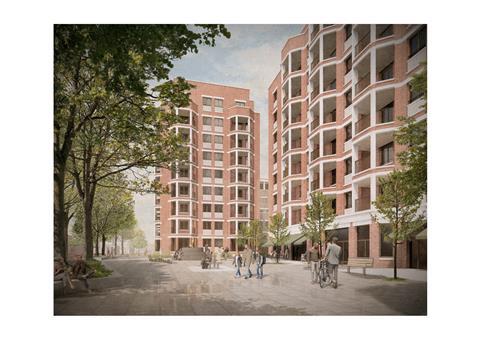Fifty per cent of the homes in ‘phase 2B’ of Aylesbury regeneration will be affordable
Southwark Council has approved a 600-home, mixed-use development that will form the next stage of the regeneration of the once notorious Aylesbury estate in south London.

Notting Hill Genesis, the social landlord behind the application, still needs final approval for the scheme, known as phase 2B, from the mayor of London. It also needs to agree section 106 contributions with the council.
The development, for which the application was submitted in August last year, will be made up of five buildings that have been designed by different architects. Fifty per cent of the 600 homes will be affordable.
It also includes commercial, community and public spaces, as well as improved play and sport facilities and wide, tree-lined streets.
John Hughes, group director of development and deputy chief executive at Notting Hill Genesis, said: “Following extensive consultation with the community we feel satisfied that the plans provide much-needed new housing for the area, balancing the needs of existing residents while encouraging those from outside the area to become part of a well-established, thriving neighbourhood.”
Subject to the mayor’s approval and successful negotiation of the section 106 agreement, Notting Hill Genesis plans to start construction on the site in March 2023.
It is expected the final regeneration of the estate will deliver 3,500 homes. The original estate, which was constructed between 1966 and 1977, had a total of 2,700 homes.
Hours after Tony Blair’s landslide to victory in the general election of 1997, he chose the Aylesbury Estate as the location for his first public speech as prime minister, promising to help the ”forgotten people”, but redevelopment work has nevertheless only begun in the last few years, a quarter of a century later.











No comments yet